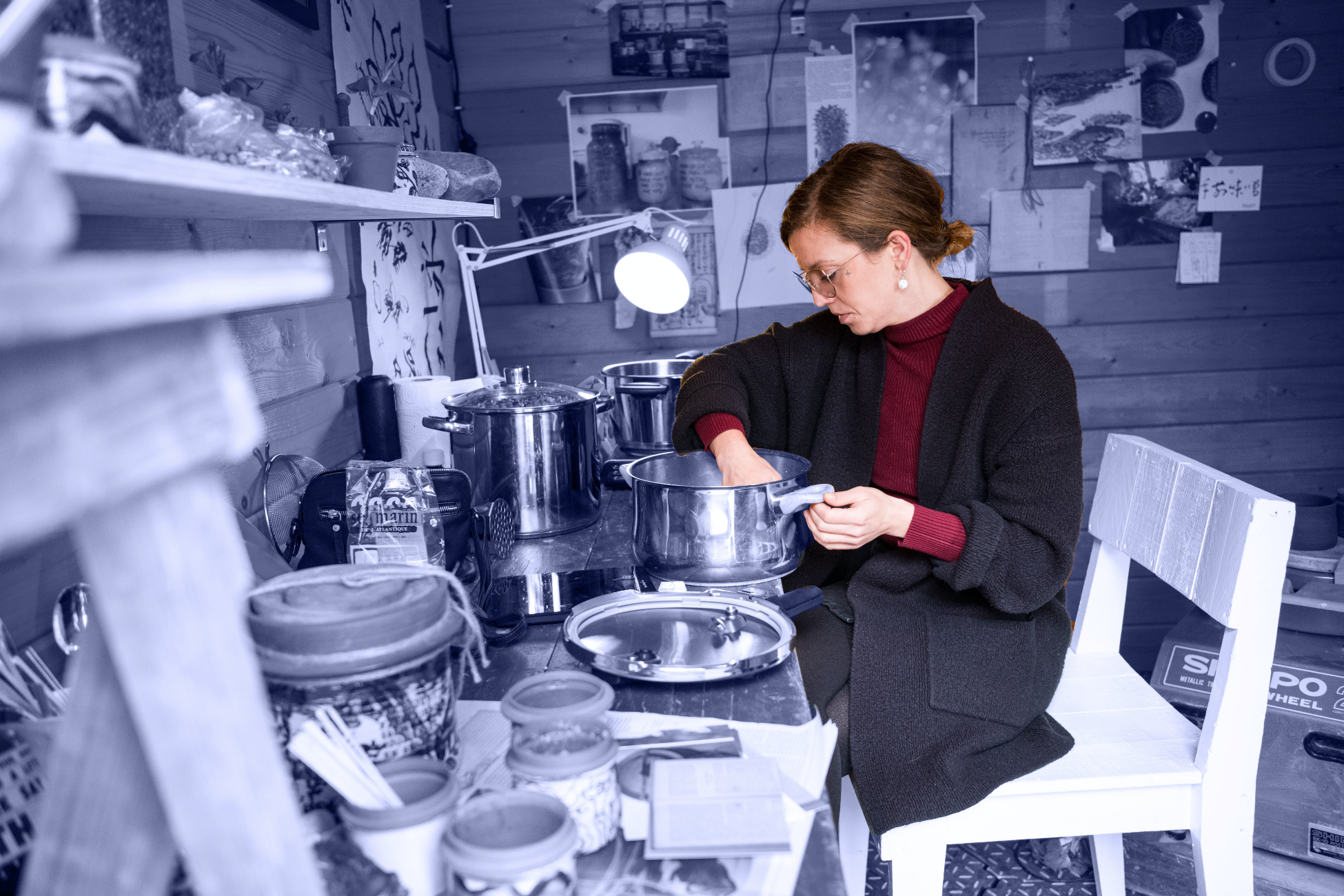The Fermentation Wizard
Chapter 2 of my graduation Project 2022Who can teach me the magic of fermented foods?
Long long ago, wizards where women, naturally connected to anything living or growing. Fermentation once was a women’s craft, and the same was true for medicine, since both go hand in hand.
I know a wizard, a fermentation wizard. Her name is Kristina Ridgley. Born in Kasachstan and raised in a world where every bit of food was energy, and waste was no option. She tells stories about the ground in Kasachstan. “It had the best soil, that is why we didn’t need much medicine, it was absorbed into the fruits and vegetables that we ate.” Her house here in the Netherlands is full of pots and drying plants, as how you image a modern wizard house would look like. Including one big pot on wheels that is hiding in the corner of her Livingroom; “I opened it too early in the season” she warned me “and now it is upset and funky, so I have to let it rest.”.
Wizards are often described as people thought to possess magical powers or command supernatural forces. The wizard of this story knows how to command (or maybe work together with) natural forces that are invisible for most people. As fermentation is easily explained as controlled rot, or controlled microbiome activity (Like moldy cheese or Kimchi or Sauerkraut, but also things like coffee, chocolate and olives are fermented)1. Kristina has a deep understanding of the plants and ingredients that grow around her, and therefor also understands what it can do for you. And by fermentation, the micro-organisms pre-digest the food, making it easier for us to absorb the nutrients and other benefits hidden in the ingredients2. She believes in food as medicine, rather than pills and synthetic medication. But she is one of the few people that truly understand the magic of fermented foods, since the ancient knowledge seems to be lost for generations.
In Japan women had lots of power due to their knowledge of healing. But with the arrival of magical technology and synthetic medicine, by monks which were men, this ancient knowledge of powerful food was not necessary anymore, and even undesirable.3 And the women’s job in the kitchen shrunk to a scorn breakfast and dinner preparation.
Later people were able to see and analyze the invisible power that is all around us, the micro-organisms. Even though microscopes made is possible to look even closer at the food, with technology also came the disconnection with our food. As more and more ingredients turned into numbers and letters. It seemed that even though the invisible magical microbes became more and more visible, “we” still don’t seem to fully understand it’s power.
However, through wizards and witches like Kristina the importance of the ancient craft is still living. And through the pandemic, the interest of medicinal foods is rising. It seems to become a battle between science and witchcrafts.
Sources:
- Crain, Liz. Countertop Culture (The Sun Magazine, Issue 413, 2010) https://www. thesunmagazine.org/issues/413/countertop-culture
- Ellix Katz, Sandor. The Art of Fermentation: an in-depth exploration of essential concepts and processes from around the world (United States of America, Chelsea Green Publishing, April 2012)
- Iwase, Akira. (Difference between gender in Japanese History, Shueisha international, 2021) (This source is translated to English for me by Asuka Kondo


(Oxymel)Fermentation vessel
This terracotta pot is made for liquid fermentation. After I talked with Kristina about different types of fermentation, I decided to make vessels that fit the best to oxymelfermentation. A oxymel is a type of ferment that is half honey, half vinegar (or kambucha) and is consumed for its medicinal benefits. For this fermentation you (most of the time) need a airtight lid, preferably a lid where gasses can escape, but air can’t go in. For that I designed a glass waterlock that fits on the neck of the vessel and glass lid that fits on top of that. Little secret: The lid is also a lens so you can look at what you eat (or drink).
